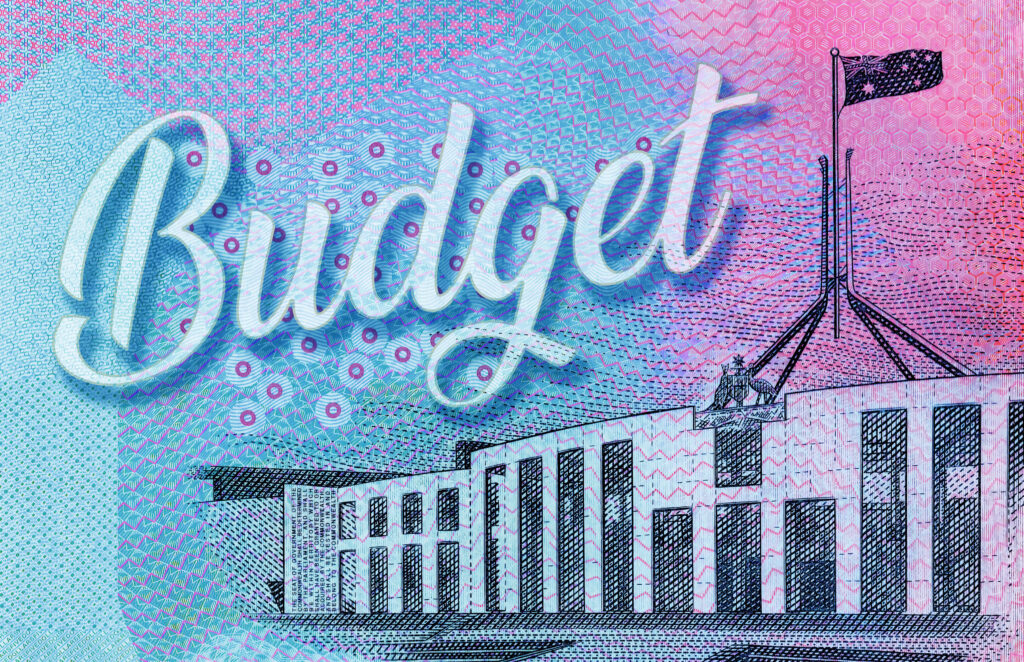Interest rates and tariffs continue to influence markets globally.
In Australia, soft inflation data has paved the way for a possible rate cut. CPI slowed more than expected to an annual rate of 2.1% from 2.4% and core inflation – the RBA’s preferred measure – fell to 2.7% from 2.9%.
US interest rates were kept steady in July despite pressure from President Trump. The greenback eased in response, providing a small boost to the Australian dollar, which has been on a rollercoaster ride in recent times
The US S&P 500 and Nasdaq 100 continue to record all-time highs as tariffs begin to be locked in and AI investment takes off.
Meanwhile, the S&P ASX 200 experienced another volatile month, but the trend continued upwards and included an all-time high.
There are also signs of consumer optimism. The July Westpac–Melbourne Institute Consumer Sentiment Index found consumers buoyed by the chance of interest rate cuts this year.

Market movements and review video – August 2025
Stay up to date with what’s happened in the Australian economy and markets over the past month.
Interest rates and tariffs continue to influence markets globally.
After the RBA’s surprise move to leave rates on hold at its July meeting, soft inflation data has paved the way for a future rate cut.
The ASX 200 climbed to a fresh record high during the month of July. Wall Street also recorded all-time highs as tariffs begin to be locked in and AI investment takes off.
Click the video below to view our update.
Please get in touch if you’d like assistance with your personal financial situation.

Track your spending
Tracking your spending is a way to take control of your money. Knowing where your money goes can help you spend less and save more.
1. Track your spending and expenses
First, get a clear view of where your money is going day to day.
Choose how long to track
One week for daily spending
Start small by recording your spending every day for at least a week. This way you can see all the money going out.
Fortnightly or monthly for recurring expenses
If you have some weeks or months with more expenses, commit to a ‘financial fortnight’ or ‘money month’. Tracking over a longer period gives you a more realistic picture.
Record what you spend
Get transaction statements
When you use a card or phone app to make a purchase, every transaction is recorded. Access these transactions through your online banking or hard-copy statements.
Use a phone app
An app is an easy way to track your spending at the time you spend. You can also set spending limits and reminders, and see your expenses at a glance.
Write it down
Record the amount, item (or store name) and date. Do this for both cash and card purchases as you spend. Or keep receipts and do your tracking at the end of the day.
Do it every day
Don’t worry about changing your spending habits straight away. Just record day by day.
To stay motivated, try tracking your spending with a partner or friend.
2. Look at your spending habits
At the end of your tracking period, look at your recorded transactions to see where your money is going.
It may surprise you how much small things can add up. You could also discover hidden costs. For example, account fees, subscriptions you don’t use anymore, or mistaken transactions.
You often find that, just by being more aware of your spending, you can start to spend less.
If you want to spend more mindfully, try taking a moment before you buy something. Ask yourself: Do I need this right now? Can I get it cheaper somewhere else? This helps you be in control of your spending choices.
3. Change your spending habits
Now you know where your money goes, making small changes can make a big difference. You don’t have to do everything at once — pick one spending habit to start with.
Separate needs from wants
Look at all your transactions and highlight what are ‘needs’ — essential items you need to live.
The ones left over are ‘wants’. These are the things you could cut back on or live without for a while, to save money. Is there anything you would like to change?
Find a quick win
Cancel anything you don’t need, like a subscription or membership you’re no longer using. Or try cutting back on one small, frequent expense, like takeaway food.
Start a savings habit
With the money from your quick win, start saving for the things that matter most.
Set up a savings account or an emergency fund.
Set limits and reminders
Knowing how much you spend on wants, try setting a realistic limit for the next week or month. This can help you avoid overspending.
Set calendar reminders for when regular expenses are due. Then put aside money to cover these payments.
Do a budget
Now you know where your money is going day to day, take it a step further and do a budget. This helps you prioritise where you want your money to go.
Having a budget lets you see how you’re going month to month, and year to year. So it is easier to stay on top of expenses and save for the things you enjoy.
For a step-by-step guide, see how to do a budget.
Reproduced with the permission of ASIC’s MoneySmart Team. This article was originally published at https://moneysmart.gov.au/budgeting/track-your-spending
Important note: This provides general information and hasn’t taken your circumstances into account. It’s important to consider your particular circumstances before deciding what’s right for you. Although the information is from sources considered reliable, we do not guarantee that it is accurate or complete. You should not rely upon it and should seek qualified advice before making any investment decision. Except where liability under any statute cannot be excluded, we do not accept any liability (whether under contract, tort or otherwise) for any resulting loss or damage of the reader or any other person. Past performance is not a reliable guide to future returns.
Important
Any information provided by the author detailed above is separate and external to our business and our Licensee. Neither our business nor our Licensee takes any responsibility for any action or any service provided by the author. Any links have been provided with permission for information purposes only and will take you to external websites, which are not connected to our company in any way. Note: Our company does not endorse and is not responsible for the accuracy of the contents/information contained within the linked site(s) accessible from this page.

Credit repair
If you have a poor credit score or an error in your credit report, it may affect loans or credit you apply for. You have a right to get errors fixed for free, and you can arrange this yourself.
What you can get fixed (for free)
Here are some of the typical errors in credit reports. You can get these fixed for free.
Errors by the credit reporting agency
The credit reporting agency may have reported your information wrongly. For example:
-
your name, date of birth or address needs updating
-
a debt is listed twice
-
the amount of a debt is wrong
To fix this kind of error, contact the credit reporting agency. They may be able to fix it straight away or help you get it changed.
Errors by the credit provider
A credit provider may have reported information wrongly. For example, they:
-
incorrectly listed that a payment of $150 or more was overdue by 60 days or more
-
did not notify you about an unpaid debt
-
listed a default (an overdue debt) while you were in dispute about it
-
didn’t show that they had agreed to put a payment plan in place or change the contract terms
-
created an account by mistake or as a result of identity theft
To fix this kind of error:
-
Contact the credit provider and ask them to get the incorrect listing removed.
-
If the credit provider agrees it’s wrong, they’ll ask the credit reporting agency to remove it from your credit report.
If you can’t reach an agreement, contact the Australian Financial Complaints Authority (AFCA) to make a complaint and get free, independent dispute resolution.
If you’re struggling to get something fixed, you can contact a free financial counsellor for help.
What you can’t change or remove
You can’t change or remove any information on your credit report that is correct — even if it’s negative information.
For example:
-
All payments you’ve made during the last two years — on credit cards, loans or bills, whether you paid on time or not.
-
Payments of $150 or more that are overdue by 60 days or more — these stay on your report for five years, even after you’ve paid them off.
-
All applications for credit cards, store cards, home loans, personal loans and business loans — these stay on your report for five years.
For a full list, see what’s in your credit report.
Check before you use a credit repair company
You may see ads from credit repair companies offering to fix errors on your credit report about credit products (like credit cards).
Before you go ahead, check the credit repair company is licensed on ASIC’s website. Choose ‘Credit Licensee’ or ‘Credit Representative’ in the drop-down menu when you search.
Only deal with a licensed credit repair company.
You don’t need to pay a credit repair company to clean up errors in your credit report. They may charge you high fees for things you can do by yourself for free. Paying a credit repair company may not improve your credit score.
How to improve your credit score
If your credit score is low, there are steps you can take to help improve it. You can:
-
lower your credit card limit
-
limit how many applications you make for credit
-
pay your rent or mortgage on time
-
pay your utility bills on time
-
pay your credit card on time each month — either pay in full or pay more than the minimum repayment
As you do these things, your credit score will start to improve. So you’ll be more likely to be approved next time you apply for a loan or credit.
Source:
Reproduced with the permission of ASIC’s MoneySmart Team. This article was originally published at https://moneysmart.gov.au/managing-debt/credit-repair
Important note: This provides general information and hasn’t taken your circumstances into account. It’s important to consider your particular circumstances before deciding what’s right for you. Although the information is from sources considered reliable, we do not guarantee that it is accurate or complete. You should not rely upon it and should seek qualified advice before making any investment decision. Except where liability under any statute cannot be excluded, we do not accept any liability (whether under contract, tort or otherwise) for any resulting loss or damage of the reader or any other person. Past performance is not a reliable guide to future returns.
Important
Any information provided by the author detailed above is separate and external to our business and our Licensee. Neither our business nor our Licensee takes any responsibility for any action or any service provided by the author. Any links have been provided with permission for information purposes only and will take you to external websites, which are not connected to our company in any way. Note: Our company does not endorse and is not responsible for the accuracy of the contents/information contained within the linked site(s) accessible from this page.




